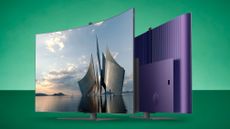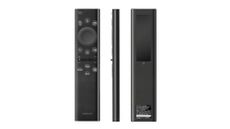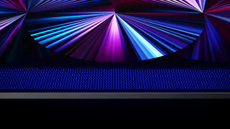Panasonic has unveiled its next flagship OLED TV at CES 2022, known as the LZ2000, and aside from bringing lots of the usual TV improvements you'd expect – improved brightness, automatic picture adjustment based on ambient light, improved gaming features – but has also announced a super-cool new audio feature unlike anything I've heard about in a TV before.
But the thing that really piqued my interest this year is the 'Directional Audio' feature, which gives you the option making the audio louder in specific positions in your living room and quieter in others, so you can share the space nicely. It uses beam-forming tech to steer the audio, and there are three options for it: “Pinpoint” pushes the sound to one specific area, leaving the rest of the room quieter; “Area” mode is like Pinpoint, but for a larger area, so you could cover a group sitting on a sofa; and “Spot” mode which increases the volume for one small area but leaves everyone else at normal volume, so allows someone hard of hearing to crank it up but everyone else to keep it at normal volume.
Obviously, how well this works in practice is something we'll have to find out later, but I love the concept! It can help to avoid sound leaking into an office where people are trying to work, or kids can watch TV while adults read in the same room.
Outside of these fancy audio tricks, you've got upfiring and side-firing speakers, as well as a whole array of speakers along the front than enable all of this direction audio, are are used to create just a big soundstage when used with regular sound modes.

This kind of chin might not be fashionable on TVs any more, but it contains the impressive speaker array.
Visuals-wise, Panasonic says that mid-level brightness is improved here, which is really good to hear. The best OLED TVs are all rushing for higher brightness levels to compete with QLED TVs (including in the new LG TVs announced at CES and the new Sony TVs from CES), but that often means only for 'peak' brightness, which is in very small areas of the screen.
Whereas increasing mid-level brightness should mean an improvement in brightness (and visibility) in just about every scene, making everyday viewing more vibrant. Again, we'll see how this goes in practice!
Panasonic's ambient light tech is interesting: it not only adjusts the picture based on brightness, but also on the colour of lights in the room, meaning that your eyes don't end up mixing warm lighting in the room around you with a 'cool' light from the TV. This is a feature of Apple's iPhones, iPads and more, and I love it there, so I look forward to seeing how it translates over TVs.
And when it comes to gaming, Panasonic is promising to up its, er, game with super-low-latency at 60Hz, and support for comprehensive HDMI 2.1 features for next-gen consoles.
The TV will be available in 55-inch, 65-inch and 77-inch sizes.
All we have for a date is 'summer 2022' and no pricing yet, but one thing to note is that there's no mention of Panasonic changing its mind and starting to release TVs in the US this year, so Americans will likely miss out on all this cool tech. More for the rest of us, at least…











